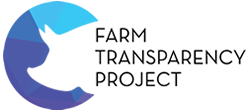While the Australian dairy industry has been traditionally pasture based, with cows roaming and grazing in paddocks with access to both grass and supplementary food, such as hay, this model is not the only one in use around the world. In America, for instance, most large-scale dairy farms house cows in indoor, intensive confinement 'feeding systems,' where cows have no access to the outdoors for all or part of the year.
In 2024, the Australian dairy industry became the first in the world to release a comprehensive national set of guidelines for the intensive confinement of dairy cows in response to 'a growing number of farms (that) have transitioned to contained housing facilities with zero grazing.' These guidelines support and encourage the adoption of these 'contained' housing systems, where cows are kept in large, concrete barns with access to individual 'loafing stalls' where cows can lie on beds of sand or recycled waste.
Like other forms of factory farming, dairy factories restrict cows from natural behaviour, such as grazing on grass and having access to open spaces to play and socialise. Instead, cows spend the majority of their lives standing on hard concrete eating grain, or being milked in an industrial milking parlour where their milk production is closely monitored and evaluated. When it begins to slow, and the cow becomes less profitable to the farm, they are sent to the slaughterhouse. On intensive farms such as these, cows are often only 3 years old when they are killed.
Additionally, cows who are fed exclusively on grain, rather than grass, suffer from a range of health issues, including liver abscesses and grain poisoning (acidosis). A diet of grain, combined with decreased movement and activity leads to serious health issues and decreased quality of life. In essence, raising a cow in a dairy barn on a grain only diet is the equivalent of feeding a human fast food every day, and banning them from exercising.
These factories exist to maximise the productivity of a dairy farm, by increasing the amount of milk a cow will produce across her life and allowing dairy farmers to utilise their paddocks to grow crops, rather than graze cows. Within intensive systems such as these, there is little room for the wellbeing of cows, who are already exploited within traditional, pasture based dairy farming and whose suffering is only amplified by increased confinement and maximised milk production.
Inside Australia's dairy factory farms
Over the past year, Farm Transparency Project investigated four dairy factory farms in Victoria and NSW. These farms have been hailed as trailblasers by the dairy industry, with their conversion to zero graze farms applauded as innovation, rather than exploitation.
Vinnicombe Dairy, Calivil, Victoria
Named dairy farmer of the year in 2017, Dehne and Sarah Vinnicombe house over 700 cows in a large, 'freestall' barn on their property in Calivil, Victoria. In interviews, Dehne Vinnicombe has stated that he was inspired by American dairy barns, which keep cows in separate sections depending on their age and stage of pregnancy or lactation. Vinnicombe operates one of the only 'compost' barn systems in the country, meaning that the manure of cows is recycled into bedding for the stalls.
Vinnicombe dairy calves year round, moving cows to a 'maternity shed,' in the days before they give birth. Calves are usually taken from their mothers within 12 hours, with female calves, who will be used for milking, taken to a nearby property to be raised. Male 'bobby' calves, and any surplus females are kept in a small pen next to their mothers. At five days old, they are loaded onto a truck and driven over 3 and a half hours, to be killed at Midfield Meats slaughterhouse in Warrnambool, Victoria.
Calmo Dairy, Calivil, Victoria
With two, large freestyle barns, plus a maternity shed, Calmo dairy farms is one of the largest in Victoria. The farm milks 1800 cows on their property in Calivil, which is just a short drive from Vinnicombe dairy.
In interviews, Jade and Belinda Clymo have stated that they see "free-stall feed barns as the way of the future," and that milk production on their farm has increased from 1.8kg of milk solids to 2.4kg, per day, per cow since transitioning to an indoor only system. Like Vinnicombe dairy, Calmo Farms calves year round. Calves are removed from their mothers and taken to a separate calf shed nearby.
AFMH Farms
Moxey Farms, Gooloogong, NSW
Moxey Farms is the first and largest property operated by Australian Fresh Milk Holdings (AFMH). It is also the largest single-site dairy in the country, housing and milking thousands of cows across nine freestall barns and three milking parlours, plus a maternity shed, feed centre and hospital. AFMH is the country's biggest dairy farming operator.
At any given time, Moxey Dairy houses 11,000 cows and is milking 5,500 of those cows each day, producing 40 litres of milk per cow per day. Annually, the farm produces 80 million litres of milk, or 220,000 litres per day.
Coomboona Farms
Located 30km northwest of Shepparton, Coomboona Farms is AFMH's first Victorian dairy property. Coomboona was formerly owned by billionaire Gerry Harvey, before being bought by AFMH, which is a partnership between the Moxey and Perick families. The property has the capacity to milk over 2500 cows, and produce 30 million litres of milk annually. Cows are housed in freestall barns and milked in a commercial rotary dairy.


